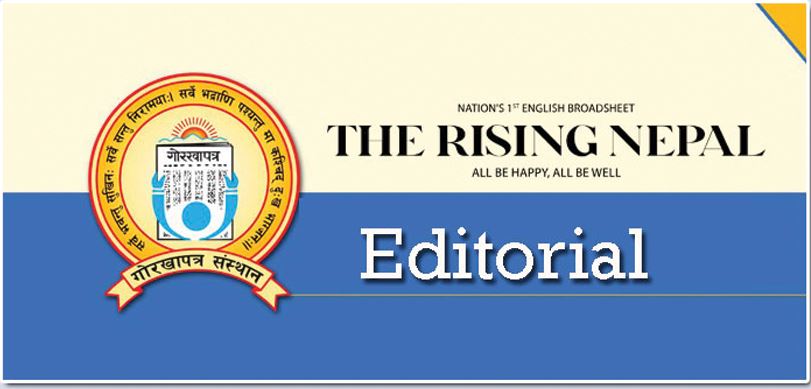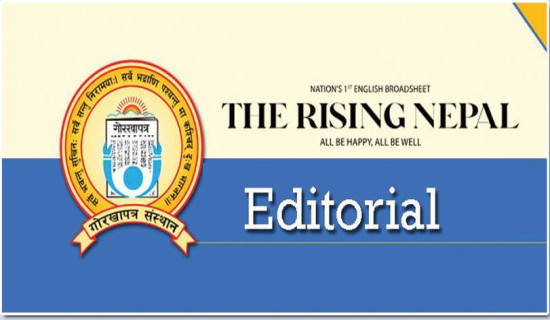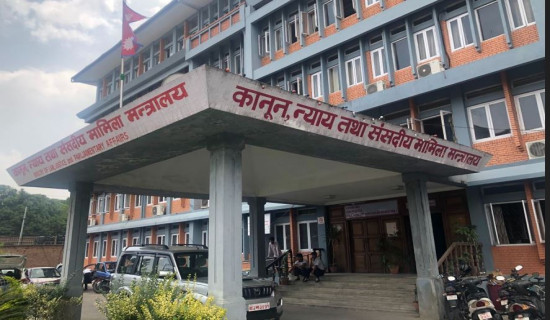- Saturday, 19 July 2025
Groundbreaking Deal
Boosted by domestic and foreign investment, Nepal’s hydropower development has gained pace in recent years. Building hydropower infrastructure remains crucial for the production, transmission and distribution of electricity. Transmission lines are vital to supply produced power to the consumers but it requires a large amount of investment. In the absence of transmission lines, it has become difficult to supply electricity uninterruptedly. But Nepal has been in dire need of huge investment. It is only the state-owned Nepal Electricity Authority (NEA) that has been constructing the transmission lines. There have been legal hurdles for the private companies to build transmission lines.
However, on Tuesday, the government and private sector, for the first time, reached an important agreement, allowing the latter to invest in transmission infrastructure to ensure the smooth domestic power supply. Earlier, the private sector was permitted only to produce electricity. According to a news report of this daily, the Tamor-Dhungesanghu 220 kV transmission line will be constructed in public-private partnership. Rastriya Prasaran Grid Company Limited (RPGCL), Hydroelectricity Investment and Development Company (HIDCL) and five private sector power generating companies inked a Memorandum of Understanding (MoU) at the Ministry of Energy, Water Resources and Irrigation. The grid company, HIDCL and five energy producing companies - Remit Hydro Limited, Simbuwa Remit Hydro Limited, Crystal Power Development Pvt. Ltd., Union Hydropower Limited and Nepal Hydro Venture Pvt. Ltd. - have jointly prepared a special purpose vehicle (SPV) for the construction of the transmission line.
The total cost of the 32-kilometres-long line is estimated at Rs. 3.8 billion. Around 70 ropanis of land have already been acquired, with the completion of the pre-construction work. Five private sector hydropower companies will invest their own capital in this project. In the initial deal, the power generating companies will have 74 per cent share of the project and the RPGCL the remaining 26 per cent. The main source of income of the project will be the wheeling charge booked by the respective power generating companies while the profit/loss will be borne by the shareholders. The proposed transmission line can carry about 700 MW of electricity produced from 10 hydropower projects in this area.
Nepal aims to generate 13,000MW of electricity by 2030 and 28,500MW by 2035. Growing production of electricity demands better network of transmission lines. The concerned agencies have to pump in around Rs. 600 billion by 2030, Rs. 700 billion by 2035 and Rs. 901 billion by 2040 to build the transmission lines. Nepal is also poised to export electricity abroad.
In early this October, Nepal, India, and Bangladesh entered into a trilateral agreement to trade 40MW electricity from Nepal. It was the first time, Nepal was able to export power to a third country. The landmark agreement has opened door for Bangladesh to import 40MW of electricity of Nepal through the transmission lines built on the Indian territory. As Nepal and Bangladesh are not linked by land, the two countries required involving India in this power trade pact. As per this deal, Nepal is likely to export 144,000 MWh (megawatt-hour) of electricity in five months—mid-June to mid-November — every year at the rate of 6.4 US cents per unit. Against this backdrop, the participation of private sector in transmission line construction will be catalytic in leapfrogging the production and trade of electricity.

















